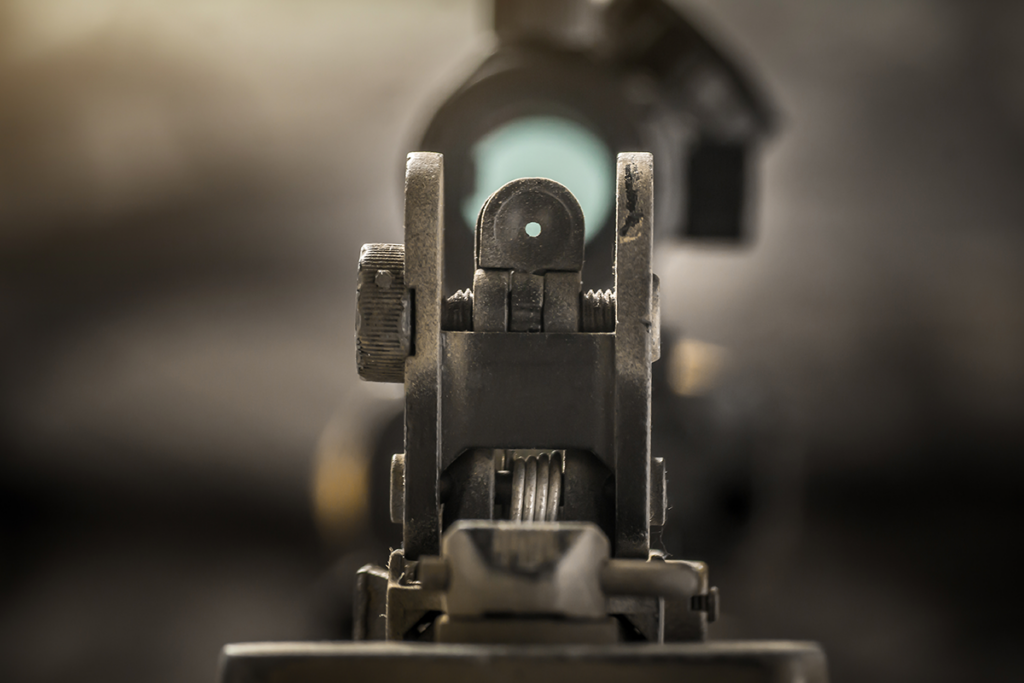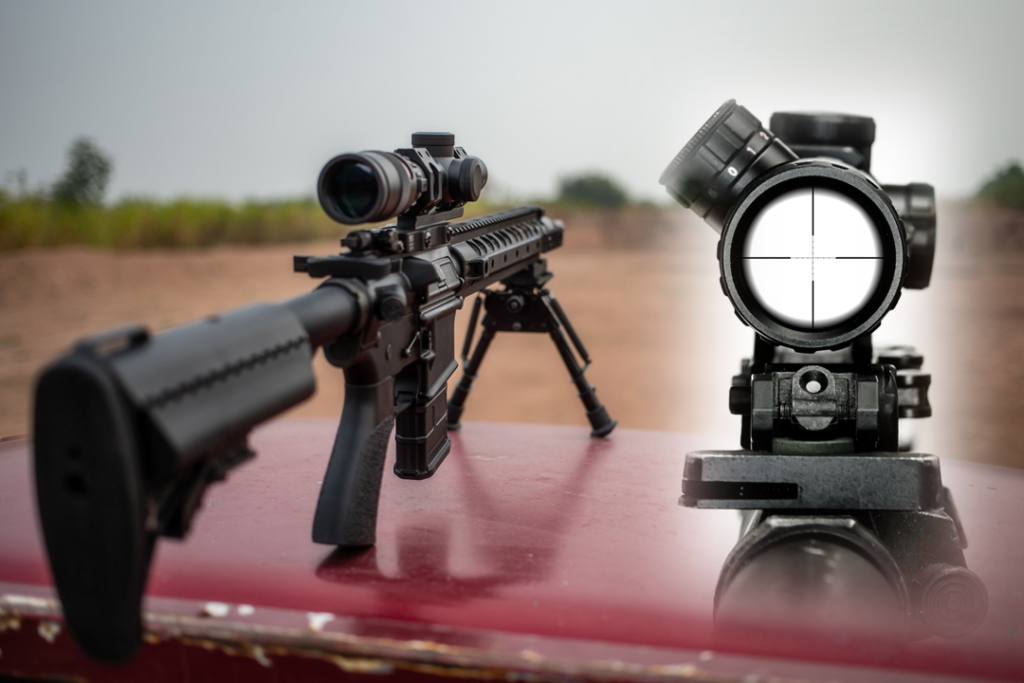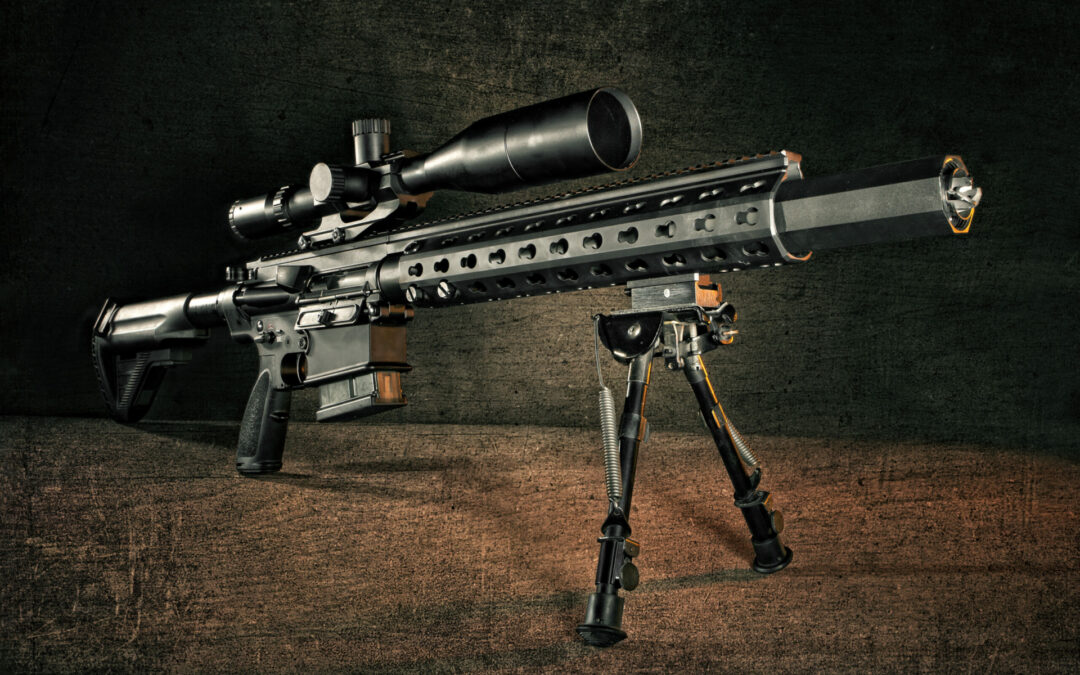The AR-15‘s utility extends beyond its inherent adaptability and reliability. It is the robust ecosystem of accessories that allows shooters to customize their AR-15, molding it into the perfect tool for their unique needs. Among these accessories, optics play an integral role in enhancing accuracy and extending the rifle’s range.
Iron Sights: The Foundational Aiming Solution
Iron sights are the fundamental aiming devices that come standard on most AR-15 rifles. Comprising a front post and rear aperture or notch, they are a rugged and reliable solution for close to medium-range engagements. While they lack the technological sophistication of more advanced options, iron sights serve as a crucial backup aiming system, and their simplicity makes them a classic staple for any AR-15.

Red Dot Sights: Rapid Target Acquisition
Red dot sights mark a step towards modernity, offering quicker target acquisition through an illuminated red dot. This dot, projected onto a transparent lens, offers a single point of focus, increasing aiming speed and efficiency.
Reflex Sights: Wider Field of View
Reflex, or reflector, sights are a subtype of red dot sights. They project the dot onto a single lens that the shooter looks through. Reflex sights have a wider field of view and are typically more compact, making them an excellent choice for situations demanding quick target acquisition over short to medium ranges.
Prism Sights: Compact Power
Prism sights, another subtype of red dot sights, use a prism to focus the light instead of a series of lenses. This design allows for a more compact optic, with the added benefit of offering an etched reticle. An etched reticle means the sight can be used even without battery power, providing an illuminated aiming point under any conditions.
Holographic Sights: Technological Precision
Holographic sights represent a leap forward in optic technology. They project a hologram of a reticle onto the shooter’s field of view, offering a more complex and precise aiming point compared to red dot sights. These sights excel in rapid, off-center shooting thanks to their minimization of parallax errors.

Scopes: Mastering Long-Range Shooting
Scopes, or telescopic sights, are designed for precision shooting at longer ranges. They magnify the target and provide a detailed reticle for pinpoint accuracy.
Fixed Magnification Scopes: Consistent Focus
Fixed magnification scopes offer a single, unchanging level of magnification. This consistent view allows for an optimized and finely-tuned shooting experience at a predetermined range. These scopes are often more robust due to their simpler design and are typically less expensive than their variable counterparts.
Variable Magnification Scopes: Flexible Targeting
Variable magnification scopes provide a range of magnification levels, offering flexibility for engagements at varying distances. These scopes are versatile and adapt to different shooting situations, from mid-range target shooting to long-range precision engagements.

First Focal Plane (FFP) and Second Focal Plane (SFP) Scopes: A Matter of Perspective
Scopes can further be divided into FFP and SFP based on the placement of the reticle. In FFP scopes, the size of the reticle changes as you adjust the magnification, maintaining the same relation to the target size throughout. In contrast, SFP scopes have a reticle that stays the same size regardless of the magnification level. While FFP scopes offer more accuracy at different ranges, SFP scopes provide a consistent sight picture, often preferred for precision shooting.
The Optics Labyrinth: Making Your Choice
The world of AR-15 optics is broad and varied, each type bringing unique advantages to your shooting experience. In making a choice, consider your shooting environment, desired range, and any specific requirements you may have. As always, familiarity and practice with your chosen optic can be as important as the device’s inherent capabilities. Armed with this knowledge, you can navigate the optics labyrinth and find the perfect companion for your AR-15.

